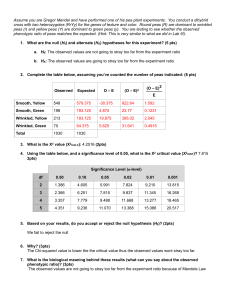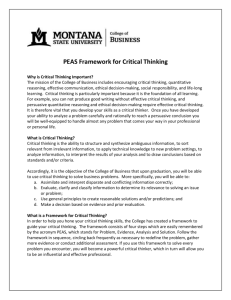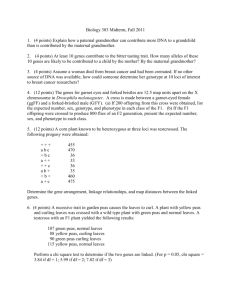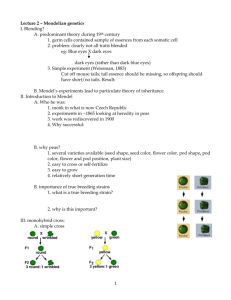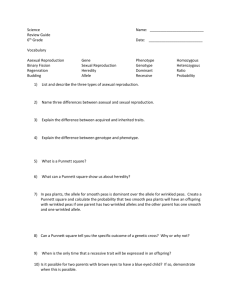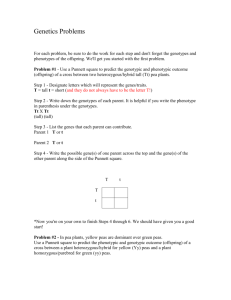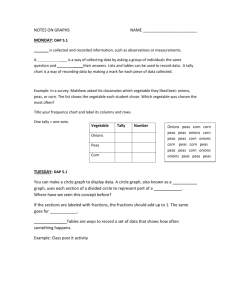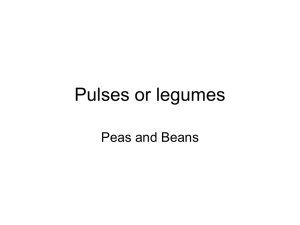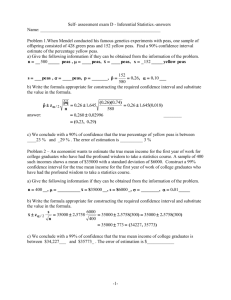Assignment 1.2.1
advertisement
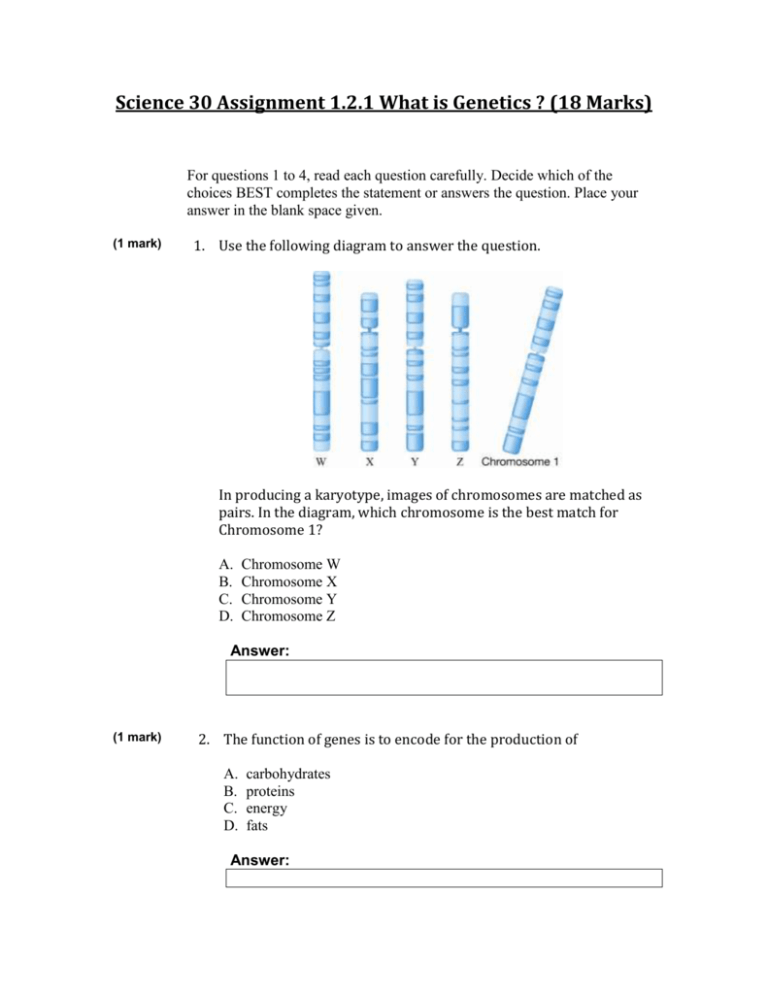
Science 30 Assignment 1.2.1 What is Genetics ? (18 Marks) For questions 1 to 4, read each question carefully. Decide which of the choices BEST completes the statement or answers the question. Place your answer in the blank space given. (1 mark) 1. Use the following diagram to answer the question. In producing a karyotype, images of chromosomes are matched as pairs. In the diagram, which chromosome is the best match for Chromosome 1? A. B. C. D. Chromosome W Chromosome X Chromosome Y Chromosome Z Answer: (1 mark) 2. The function of genes is to encode for the production of A. B. C. D. carbohydrates proteins energy fats Answer: (1 mark) 3. In Gregor Mendel’s systematic studies of inheritance, he crossed round peas with wrinkled peas. The offspring were all round peas. Then these round peas were crossed with each other. What was the result? A. B. C. D. all round peas 50% round peas and 50% wrinkled peas 75% round peas and 25% wrinkled peas 25% round peas and 75% wrinkled peas Answer: (1 mark) 4. In a dog’s body, each cell has 78 chromosomes. How many chromosomes are there in a dog’s sperm cells? A. B. C. D. 18 36 78 156 Answer: (2 marks) 5. Match each description with the appropriate term listed. Place your answer in the blank space given. i. insulin iii. antibody a. b. c. d. (2 marks) ii. actin or mayosin iv. amylase a hormone a contractile an enzyme a defensive protein 6. Decide whether each statement is true (T) or false (F). Place your answer in the blank space given. a. Mitosis produces diploid cells. b. A haploid cell is a fused cell that results from fertilization. c. Meiosis produces haploid cells. d. A fertilized egg develops further through meiosis. (2 marks) 7. Describe the origin of modern corn. In your description, specify who was responsible for the development of a type of corn resembling that grown today. Describe what process was used and the span of time involved. Also, name the plant from which this corn was developed. Answer: 8. Identify and explain the four main conclusions form Mendel’s pea plant experiments (8 marks)

